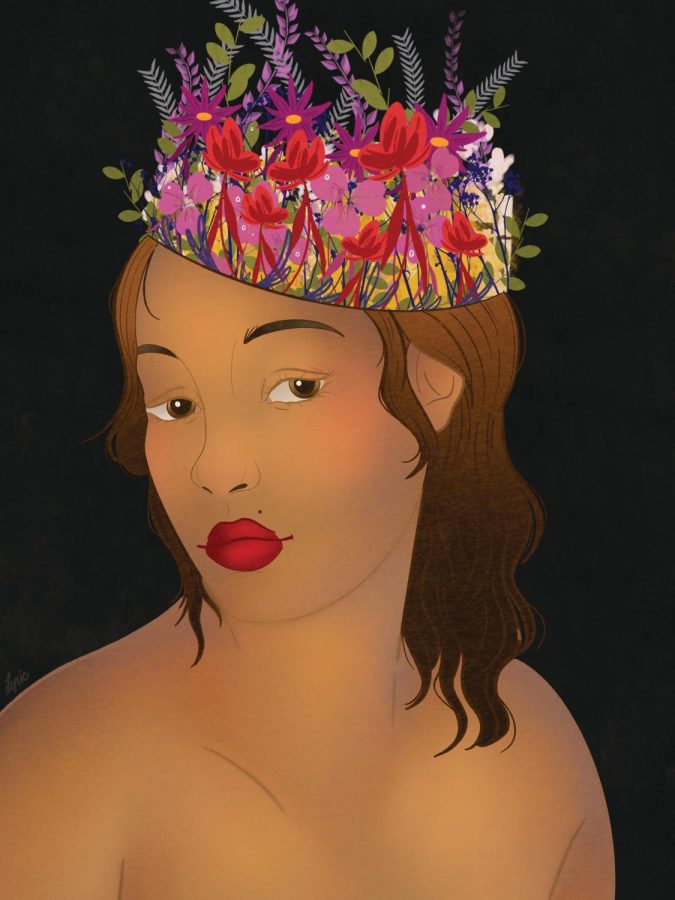AACC publishes new research by students
Image courtesy of Jennifer Schuster
The digital illustration “Emergencia: Princesa de las Flores” by student Lillian R. Putnam is the cover art for the second volume of the Journal of Emerging Scholarship.
May 1, 2023
AACC released the second volume of the college’s interdisciplinary student research journal at a launch party on April 28.
The latest edition of the Journal of Emerging Scholarship includes five articles from students of English, statistics, biology and environmental science.
“A student can submit their manuscripts for the work that they’ve done up to a year after having left AACC,” Lance Bowen, dean of the School of Science, Technology and Education, said.
“A few years back a group of [faculty] got together and we talked about opportunities for students to do more than just show up and take courses,” Bowen said. “And one of the high-impact practices across the nation … is the opportunity to do undergraduate research. … So we drew out a plan for designing a peer review journal that we could publish student works in.”
Bowen said a faculty editorial board does a “tremendous amount of work” on the journal, “but next year, we’re looking to have an intern work on the publication for us” and to encourage students to become members of the editorial board.
Maggie Nester, a transfer studies student, has an article in the next edition of the journal.
“It’s a benefit for me because I get hands-on experience,” Nester said. “I probably wouldn’t get experience like this at a four-year college.”
Biology and environmental science student Emily Archer, who also published research in the new edition, said she hopes the aquaponics project she wrote about will affect the industry.
In her project, she grew lettuce and tomato plants that shared water with an attached fish tank occupied by tilapia. She said the project created an environmentally safer way to farm food.
Find copies in the library or CALT 234.












